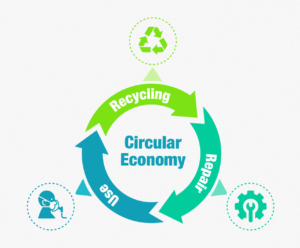
Welcome to our SDG Editorial Board Members blog collection. We are hearing from the Editorial Board Members of the BMC Series journals whose work aligns with achieving the Sustainable Development Goals. Here you can find other posts in this collection, grouped with the tag ‘SDG editorial board members‘.
Environmental Sustainability of the “Right to Repair” Medical Equipment
A medical Right-to-Repair (RTR) movement can improve the sustainability and the environmental impact of the medical field. Yet, the effective implementation of medical RTR remains challenging. Healthcare systems are progressively relying on linear supply chains based on single-use disposable medical devices. This intrinsically unsustainable paradigm of manufacturing and use of medical equipment contributes to rising healthcare costs and worldwide ecological destruction. The effects imperil public health by contaminating the air, soil, and water, depleting resources, and causing catastrophic climate change. In this respect, sustainable development is making an urgent call to change the way in which the healthcare system satisfies its needs. Medical RTR would enable medical equipment to circulate through technical cycles of reuse, repair, re-purposing and recycling. Hence, medical RTR would make possible the transition of the healthcare system to a more circular economy furthering the goal of providing increasingly complex care in an environment-friendly future. The circular economy is an essential part of the sustainability agenda and has the potential to contribute to several Sustainable Development Goals (SDGs). Thus, effective implementation of medical RTR has powerful effects on achieving affordable and sustainable standards for the healthcare system.
“Right To Repair” For A Circular Healthcare Economy:

During the Covid-19 pandemic, medical device companies responded by providing technical information and resources to biomedical technicians to meet the needs of front-line healthcare providers. In the United States (U.S.) last year, Oregon Senator Ron Wyden introduced the RTR act calling manufacturers to provide the technical knowledge and tools necessary for hospitals to repair medical equipment.
Since then, there has been significant progress in the medical RTR movement. On July 9, 2021, U.S. President Biden signed a sweeping executive order urging the Federal Trade Commission (FTC) to establish RTR regulations and to issue rules preventing manufacturers from imposing restrictions on their product’s repair.
In this respect, medical RTR yields the implementation of a circular economy model of healthcare that ensures that medical equipment is maintained at the highest value application for a longer lifespan. It provides a way to maximize equipment’s productivity, minimize waste and achieve sustainable standards. The medical RTR can allow medical equipment to flow through technological cycles of repair, reprocessing and reuse. As a consequence, RTR legislation is expected to allow the healthcare sector in the US to become more sustainable, environment-friendly and affordable.
Significance of the “Right To Repair” in The Medical Field:
In the wake of Covid-19 pandemic, supply chain systems proved to be vulnerable to disruptions from manufacturing shortages, interrupted transportation systems and price increases. In addition to Covid-19, climate change remains the most important threat to the global ecosystem, including the healthcare system. Therefore, it is critical we act with appropriate concern.
In 2003, large hospitals in the US made up less than 1% of all commercial buildings but used up to 4.3% of all commercial energy consumed in the US. In terms of global warming, US hospitals produced the equivalent of about 215 million metric tons of carbon dioxide in 2007 (Commercial Building Energy Consumption Survey-CBECS).
Medical RTR appears to be a critical strategy to develop an environment-friendly healthcare sector in addition to fulfilling shortages in medical equipment. Reprocessing and repairs are found to be effective in eliminating waste and improving environmental sustainability. In fact, reprocessing companies in the United-States, Canada and Europe reduced hospital solid waste generation by almost 7,100 tons in 2018 (MacNeill et al., 2020).
Challenges to Medical Right to Repair:
Despite the importance of repairability for environmental sustainability, there are challenges to medical equipment’s repair. Safety, security and adaptability are the main challenging considerations to take into account when advancing RTR laws.
First, patient’s safety is a main priority when considering the implementation of medical RTR. Regulations and standards are crucial to ensure quality repairs allowing medical devices to function as planned. In contrast, inaccurate repairs may result in serious and life-threatening implications.
Second, the security consideration needs to be taken into account throughout the repair process. To this end, the patient’s privacy needs to be protected and security against hacking and other cybercrimes needs to be maintained.
Third, medical RTR must be adaptable to continuous healthcare innovations and to the needs of the healthcare system. Medical RTR should respect IP (intellectual property) rights as a way to continue innovation in the medical technology space. Original manufacturers may observe flaws and inefficiencies and innovate in response to clinical demands and the regulation should not inhibit these evolving specifications. However, in contexts where urgent repairs can be life-saving, such as the Covid-19 pandemic, medical RTR can help reconcile the need to preserve innovation with the need for repairability and openness in the setting of patient care.
Road Map to A Circular Healthcare Economy:
To make the medical RTR effective, wrong practices of design for programmed obsolescence have to disappear in order to achieve effective long-lasting sustainable development.
An action plan needs to include clear incentives for manufacturers to provide the spare parts, tools and necessary technical knowledge to allow hospitals to repair their equipment. Also, products should be designed to last in time and be able to be repaired multiple times before they have to be recycled. Thus, design for durability is a key feature of the circular economy.
In addition, rules and regulations related to medical RTR need to ensure that medical equipment is subject to high quality repairs and safety regulations. To this end, a collaboration between manufacturers and hospitals is necessary to ensure that biomedical technicians follow the same standards that manufacturers have adopted.
To Sum Up:
A circular healthcare economy based on medical RTR increases efficiency and offers an alternative to the unsustainable environmental consequences of current practices. An active role of the healthcare system in the ecological transition is most likely to involve a high level of concerted actions among different people and institutions.
Comments